Generation Language: A Short Note
In today’s fast-paced and rapidly evolving world, different generations communicate and express themselves using unique language and dialects. Understanding the nuances and characteristics of generational language can help bridge gaps and foster better intergenerational relationships.
Key Takeaways:
- Generational language reflects the cultural and technological influences of a specific era.
- Each generation has its own linguistic style, vocabulary, and expressions.
- Understanding generational language can enhance communication and reduce misunderstandings.
**The Silent Generation**, born between **1928 and 1945**, grew up during a time of war and economic instability. Their language tends to be rule-based, formal, and respectful. _Interesting fact_: Members of the Silent Generation often use idioms and phrases that may be unfamiliar to younger generations.
**Baby Boomers**, born between **1946 and 1964**, experienced a period of significant social change and economic prosperity. Their language reflects their idealism and rebellion against traditional norms. _Interesting fact_: Baby Boomers are known for coining popular phrases and expressions that have become part of everyday language.
Generational Language Characteristics
**Generation X**, born between **1965 and 1980**, grew up during a time of technological advancements and economic uncertainty. Their language demonstrates a mix of idealism and skepticism, often characterized by sarcasm and irony. _Interesting fact_: Generation X is known for their use of alternative slang and abbreviations.
| Generation X Language Characteristics |
|---|
| Use of sarcasm and irony |
| Frequent use of abbreviations and acronyms |
| Preference for informal communication |
**Millennials**, born between **1981 and 1996**, are considered the first true digital natives. Their language is heavily influenced by technology, social media, and internet culture. _Interesting fact_: Millennials are known for their use of emojis, memes, and hashtags to convey emotions and ideas.
| Millennial Language Characteristics |
|---|
| Frequent use of emojis, memes, and hashtags |
| Incorporation of internet slang and abbreviations |
| Creation of new words and phrases |
**Generation Z**, born between **1997 and 2012**, has grown up in a hyper-connected world characterized by smartphones, social media, and instant communication. Their language is characterized by its brevity and use of visual content. _Interesting fact_: Generation Z has embraced inclusivity and advocates for using gender-neutral language.
It is important to note that generational language is constantly evolving and influenced by various factors such as technology, social movements, and cultural shifts. Keeping up with these changes can ensure effective communication across generations.
Practical Tips for Bridging Generational Language Gaps:
- Show interest in and respect for each other’s language.
- Be open to learning and adopting new vocabulary and expressions.
- Use clear and concise communication to avoid misunderstandings.
- Adapt your language style based on the preferences of the person you are communicating with.
- Avoid making assumptions or stereotypes based on generational language.
By understanding and appreciating the unique language of different generations, we can foster meaningful connections and bridge the communication gaps that often arise in diverse age groups.
Generational Language Comparison
| Generation | Characteristics |
|---|---|
| Silent Generation | Formal, respectful, idioms |
| Baby Boomers | Idealistic, rebellious, popular phrases |
| Generation X | Sarcastic, ironic, slang, abbreviations |
| Millennials | Technology-driven, emojis, internet slang |
| Generation Z | Brevity, visual content, gender-neutral language |
Generational language serves as a reflection of our cultural, social, and technological evolution. Embracing and understanding these linguistic differences can help foster stronger connections and promote effective communication across generations.

Common Misconceptions
Misconception 1: Generational language solely determines a person’s values and beliefs.
One common misconception around the topic of generation language is that it is the sole determinant of a person’s values and beliefs. While it is true that the language used by a particular generation may reflect some of their shared experiences and cultural influences, it is important to recognize that individuals within a generation are diverse and may hold a wide range of beliefs and values.
- Generational language is a reflection of shared experiences, but does not define an individual’s complete value system.
- It is essential to consider other factors such as upbringing, education, and personal experiences when understanding a person’s values.
- Assumptions based solely on generational language can lead to misunderstandings and stereotypes.
Misconception 2: Generational language is static and unchanging.
Another misconception is that generational language remains static and unchanging. While there may be unique vocabulary or slang associated with a specific generation, language is dynamic and constantly evolving. Different generations adapt and incorporate new terms and idioms, influenced by cultural, technological, and social changes.
- Generational language evolves alongside societal changes.
- New technologies and trends can influence the language used by different generations.
- Language shifts can occur rapidly, causing certain terms to become outdated or lose their original meaning.
Misconception 3: Generational language creates a complete barrier between generations.
Some people mistakenly believe that generational language creates an insurmountable barrier between different age groups, making effective communication difficult. However, while generations may use different idioms or slang, they can still find common ground through effective communication strategies and a willingness to understand one another.
- Bridging the generational language gap often requires active listening and empathy.
- Both older and younger generations can adapt and learn from each other’s linguistic preferences to improve intergenerational communication.
- Engaging in open dialogue can help dispel misunderstandings and foster mutual understanding.
Misconception 4: Generational language is solely determined by age.
Another misconception is that generational language is solely determined by a person’s age. While age can play a role, other factors such as cultural background, geographic location, and subcultures also influence a person’s language usage. It is important to consider the broader context when analyzing generational language.
- Generational language can vary among different cultural and subcultural groups.
- Cultural influences shape language preferences and expressions.
- Regional dialects and accents can also affect generational language usage.
Misconception 5: Generational language defines an individual’s entire identity.
Lastly, it is a misconception to believe that generational language defines a person’s entire identity. While language is an important aspect of culture and communication, an individual’s identity is multifaceted and influenced by various factors, including personal experiences, values, beliefs, and relationships.
- Identity is shaped by a multitude of factors beyond generational language.
- Generational language is just one element of an individual’s cultural repertoire.
- Understanding an individual’s identity requires taking into account the complexity of their experiences and influences.

The Evolution of Programming Languages
In the world of computer science, programming languages are constantly evolving to meet the growing demands of developers and users. This article takes a closer look at the evolution of programming languages over the years and highlights some interesting points along the way.
The Popularity of Programming Languages
Programming languages come and go, their popularity influenced by various factors such as ease of use, versatility, and demand in the job market. The table below showcases the current popularity of some popular programming languages.
| Programming Language | Popularity |
|---|---|
| Python | 1 |
| JavaScript | 2 |
| Java | 3 |
| C++ | 4 |
| Go | 5 |
The First High-Level Programming Language
Before the advent of high-level languages, programming was done using low-level assembly languages, which were not user-friendly. The table below showcases the first high-level programming language and its year of creation.
| Programming Language | Year of Creation |
|---|---|
| FORTRAN | 1957 |
The Growth of Object-Oriented Programming
Object-oriented programming (OOP) revolutionized the way code is written and organized. The table below highlights the years when some popular OOP languages were introduced.
| Programming Language | Year Introduced |
|---|---|
| Smalltalk | 1972 |
| C++ | 1983 |
| Java | 1995 |
The Rise of Scripting Languages
Scripting languages offer flexibility and ease of use, making them popular choices for various applications. The table below showcases the year of introduction for some popular scripting languages.
| Scripting Language | Year Introduced |
|---|---|
| Perl | 1987 |
| Python | 1991 |
| PHP | 1995 |
| Ruby | 1995 |
The Influence of C
+C has had a significant impact on the development of programming languages. The table below illustrates some languages that were influenced by C.
| Language | Influenced By C |
|---|---|
| C++ | Yes |
| C# | Yes |
| Objective-C | Yes |
The Impact of Functional Programming
Functional programming has gained popularity in recent years due to its emphasis on immutability and pure functions. The table below highlights some functional programming languages and their respective years of introduction.
| Language | Year Introduced |
|---|---|
| Lisp | 1958 |
| Haskell | 1990 |
| Erlang | 1986 |
The Birth of Web Development Languages
With the growth of the internet, specialized languages for web development emerged. The table below showcases some popular languages used for web development and their years of introduction.
| Language | Year Introduced |
|---|---|
| HTML | 1990 |
| CSS | 1996 |
| JavaScript | 1995 |
The Advent of Mobile Development
Mobile development gained immense popularity with the rise of smartphones. The table below showcases some popular mobile development languages and their respective years of introduction.
| Language | Year Introduced |
|---|---|
| Swift | 2014 |
| Kotlin | 2011 |
| React Native | 2015 |
Conclusion
From the initial creation of high-level languages to the proliferation of web and mobile development, programming languages have come a long way. The continuous evolution of programming languages ensures that developers have the tools they need to create innovative and efficient solutions. As technology continues to advance, we can expect further advancements and new languages to meet the dynamic demands of the digital world.
Frequently Asked Questions
What is Generation Language?
Generation Language is a programming language specifically designed for generating code, documents, or other types of output. It provides a set of tools and features to automate and streamline the process of generating content.
What are the benefits of using Generation Language?
Some of the key benefits of using Generation Language include improved productivity, consistency, and maintainability. It allows developers to automate repetitive tasks and generate code or documents based on predefined templates, reducing the likelihood of errors and promoting consistency across different outputs.
Can Generation Language be used for web development?
Yes, Generation Language can be used for web development. It provides functionalities to generate HTML, CSS, JavaScript, and other web-related files. It can help automate the process of generating web pages, reducing the need for manual coding and enabling rapid development.
Is Generation Language suitable for large-scale projects?
Yes, Generation Language can be used for large-scale projects. Its ability to generate code or documents based on templates makes it well-suited for projects with a high volume of repetitive tasks. It allows developers to quickly generate and update code snippets, reducing development time and effort.
What is the learning curve for Generation Language?
The learning curve for Generation Language can vary depending on your prior programming experience. If you are already familiar with programming concepts and have experience with other languages, you may find it relatively easy to pick up. However, if you are new to programming, it may take some time to grasp the language’s syntax and concepts.
Are there any resources available for learning Generation Language?
Yes, there are resources available for learning Generation Language. Online tutorials, documentation, and community forums can provide valuable support and guidance. Additionally, there may be books or courses specifically dedicated to teaching Generation Language.
Can Generation Language integrate with other programming languages?
Yes, Generation Language can integrate with other programming languages. It often serves as a complementary tool to other languages and can be used in conjunction with them. Developers can leverage the capabilities of Generation Language to generate code in other languages or automate tasks in a larger development pipeline.
What are some popular use cases for Generation Language?
Generation Language is commonly used in scenarios where repetitive code or document generation is required. Some popular use cases include the automatic generation of database access layers, code scaffolding, automatic documentation generation, and the generation of configuration files.
Can Generation Language be customized to specific project requirements?
Yes, Generation Language can be customized to specific project requirements. Its template-based approach allows developers to define their own templates and rules for generating code or documents. This flexibility enables developers to adapt Generation Language to their specific needs and workflows.
Is Generation Language widely adopted in the industry?
While Generation Language may not be as widely known or used as some mainstream programming languages, it has gained popularity in certain domains and industries. Its ability to automate code generation and improve development efficiency makes it appealing to developers and teams working on projects with repetitive tasks.




